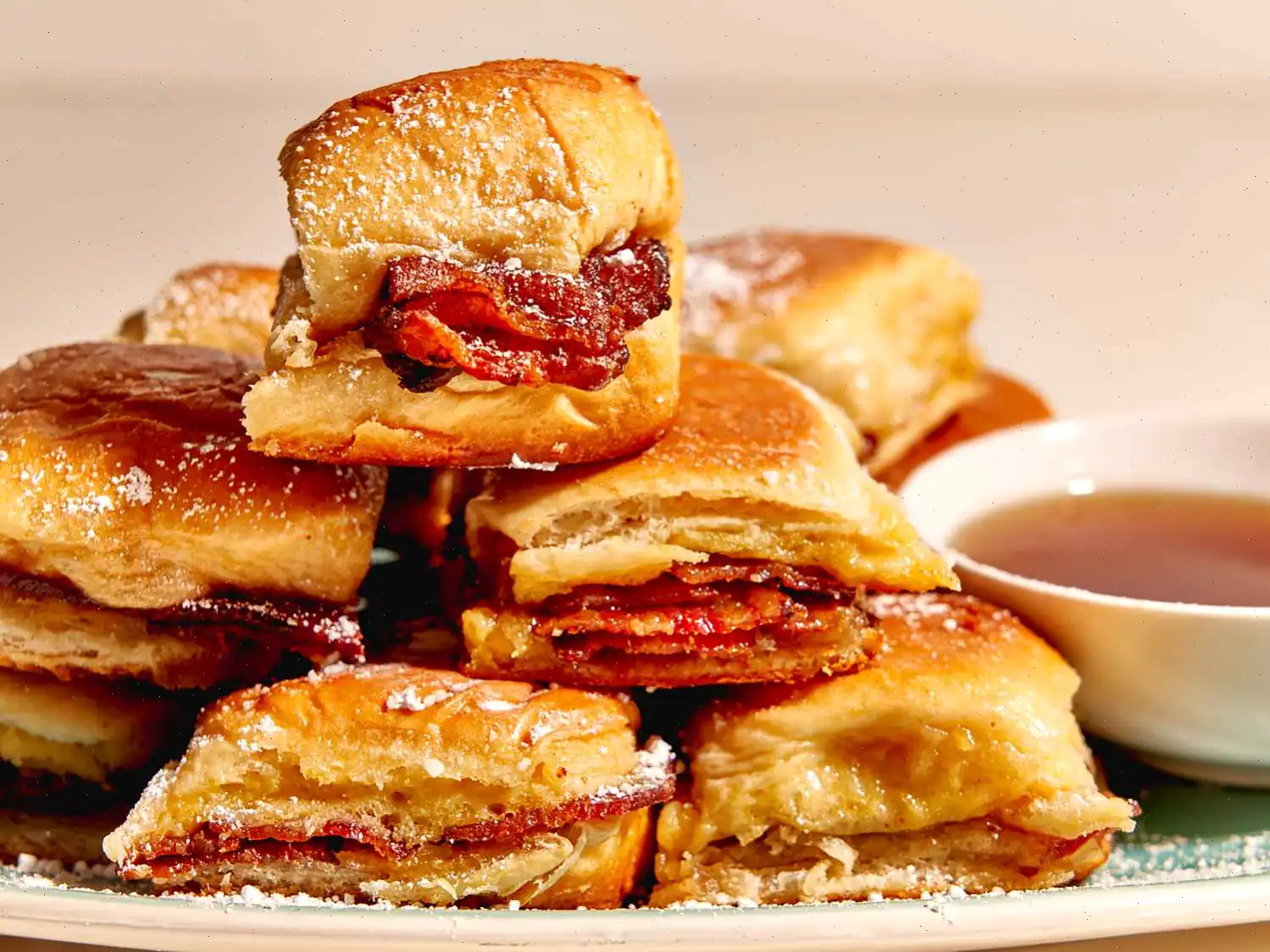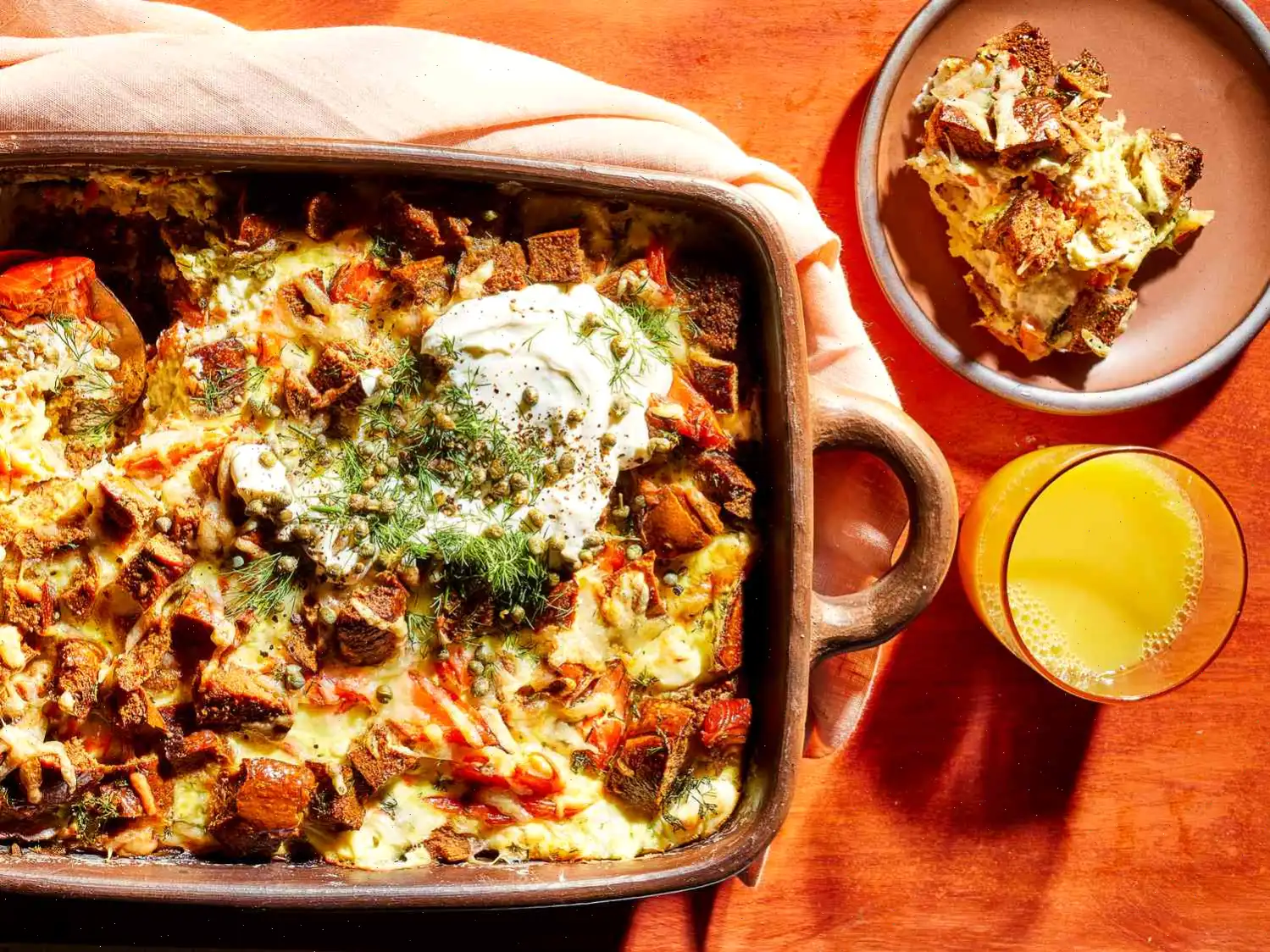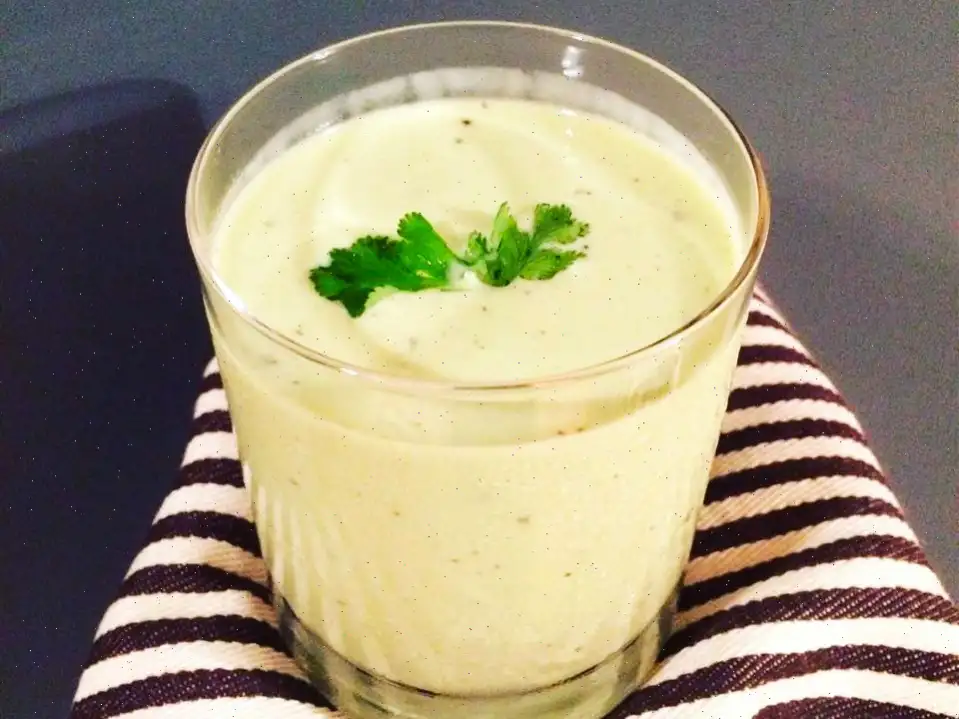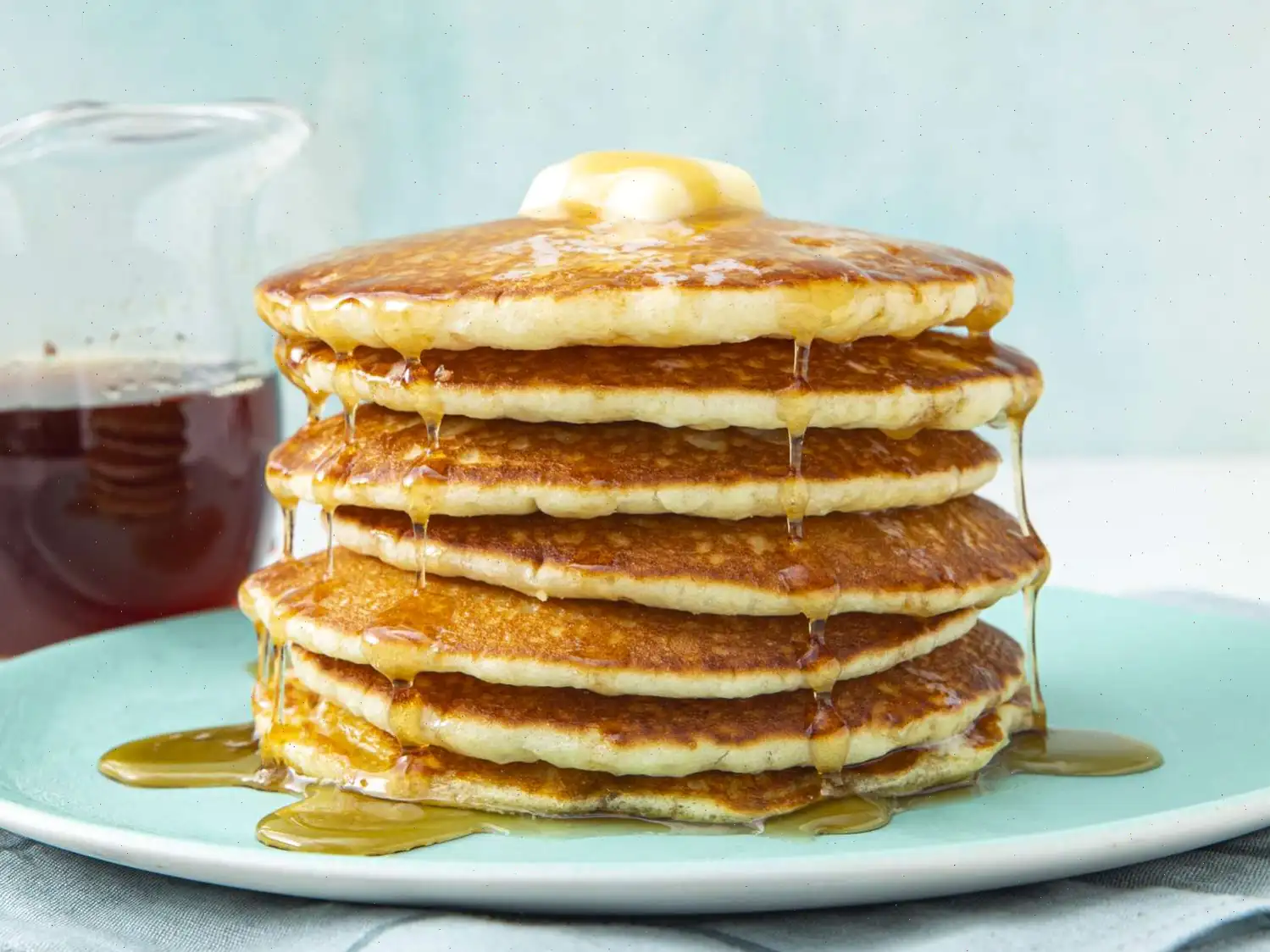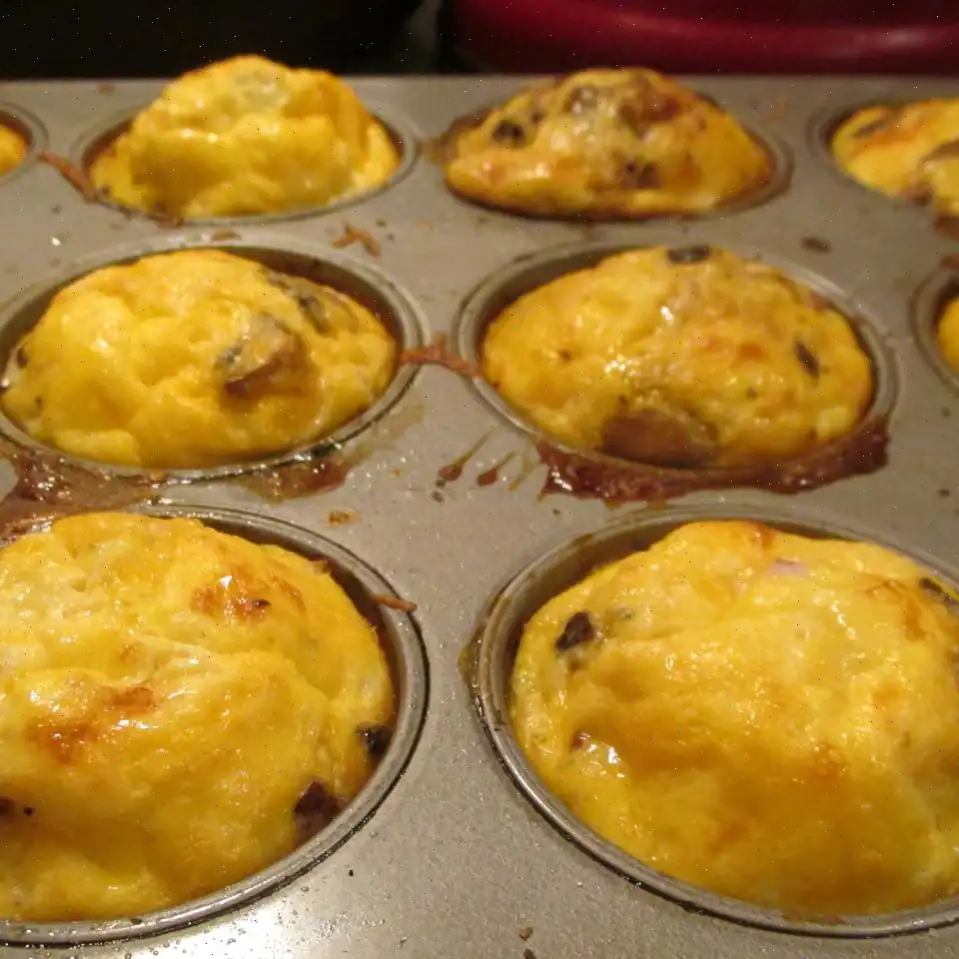
Pumpkin Ginger Scones Recipe
Ingredients
- 2 cups all-purpose flour
- cup brown sugar
- 1 teaspoon baking powder
- teaspoon baking soda
- teaspoon ground ginger
- teaspoon ground cinnamon
- teaspoon pumpkin pie spice
- teaspoon salt
- 1 teaspoon ground nutmeg
- cup unsalted butter, cut into pieces
- cup raisins (Optional)
- cup chopped toasted pecans (Optional)
- cup pure pumpkin puree
- cup buttermilk, or more as needed
- 1 teaspoon pure vanilla extract
- Egg Wash: 1 large egg, 1 tablespoon milk, 1 tablespoon coarse sugar
- Icing: cup powdered sugar, 2 tablespoons milk, 1 tablespoon molasses, 1 teaspoon ground cinnamon
Directions
Step 1: Preheat the oven to 400F (200C). Line a baking sheet with parchment paper.
Step 2: In a large bowl, mix together the flour, brown sugar, baking powder, baking soda, ginger, cinnamon, pumpkin pie spice, salt, and nutmeg until thoroughly combined.
Step 3: Using a pastry blender or fork, cut the butter into the flour mixture until it resembles coarse crumbs.
Step 4: Stir in the raisins and chopped pecans (if using), making sure they are evenly distributed throughout the dough.
Step 5: In a small bowl, whisk together the pumpkin puree, buttermilk, and vanilla extract. Add this mixture to the flour mixture and stir with a wooden spoon until the dough just comes together. Be careful not to overmix.
Step 6: Transfer the dough onto a lightly floured surface and gently knead it 4 to 5 times. The dough will be sticky, so be gentle. Pat it into a 7-inch circle that is about 1 inches thick.
Step 7: Cut the dough into two halves, then cut each half into 4 triangular wedges, creating 8 pieces in total.
Step 8: Place the scones onto the prepared baking sheet.
Step 9: To make the egg wash, whisk together the egg and milk in a small bowl. Brush this mixture over the tops of the scones, then sprinkle them generously with coarse sugar.
Step 10: Bake the scones on the middle or top rack of the preheated oven for about 20 minutes, or until they are golden brown and a toothpick inserted into the center of a scone comes out clean.
Step 11: Once baked, transfer the scones (still on parchment paper) to a cooling rack or countertop and allow them to cool.
Step 12: While the scones are cooling, prepare the icing. In a small saucepan, combine the powdered sugar, milk, molasses, ginger, and cinnamon. Heat the mixture over medium-high heat and bring it to a boil, about 5 minutes.
Step 13: Once the icing reaches a boil, let it cool for 3 to 5 minutes before drizzling it over the scones. Allow the icing to harden before serving.
Cook's Notes
You can substitute extra cinnamon, nutmeg, and ginger for the pumpkin pie spice if preferred. If you dont have buttermilk, regular milk will work, though using half-and-half will make it richer. Be sure to use pure canned pumpkin and not a pre-mixed pumpkin pie filling, as the latter contains added sugar and spices.
Nutrition Facts (per serving)
- Calories: 363
- Total Fat: 15g (19% Daily Value)
- Saturated Fat: 8g (40% Daily Value)
- Cholesterol: 55mg (18% Daily Value)
- Sodium: 278mg (12% Daily Value)
- Total Carbohydrate: 53g (19% Daily Value)
- Dietary Fiber: 2g (7% Daily Value)
- Total Sugars: 25g
- Protein: 5g (11% Daily Value)
- Vitamin C: 1mg (1% Daily Value)
- Calcium: 89mg (7% Daily Value)
- Iron: 2mg (13% Daily Value)
- Potassium: 221mg (5% Daily Value)
History and Origin
The scone, a beloved British baked good, dates back to the 16th century, originally made with oats and baked on griddles. It wasnt until the 19th century, when baking powder became widely used, that the modern scone began to take shape. While the pumpkin and ginger variety of scones has no direct historical link to the original scone recipes, the combination of spices and pumpkin is a nod to the fall season in many Western countries. In particular, these scones are a part of the broader trend in American baking to incorporate seasonal ingredients like pumpkin, which is especially popular during the autumn months. This flavor profile, enriched with ginger and cinnamon, has become synonymous with fall and harvest festivals, making the pumpkin ginger scone a cozy treat enjoyed at many gatherings.
Regional Variations
While the pumpkin ginger scone is predominantly enjoyed in North America, especially in the United States and Canada, variations can be found in other parts of the world. In the UK, scones are traditionally served with clotted cream and jam, though they are generally made without the inclusion of pumpkin. The pumpkin spice trend, particularly prevalent in North America, has led to the adaptation of scones to include this rich, seasonal flavor. In Australia, where pumpkin is a common vegetable in savory and sweet dishes alike, you may also find savory scones made with pumpkin, often paired with cheese or herbs. The use of ginger in the scones adds a warm, spicy kick that is characteristic of autumnal recipes, making this treat a perfect accompaniment to tea or coffee during cooler months.
How It Differs from Similar Dishes
The pumpkin ginger scone stands out from other baked goods such as pumpkin bread or muffins due to its flaky texture and the use of cold butter, which creates a lighter, airier product. Unlike bread or muffins, which have a denser crumb, scones are known for their delicate flakiness, achieved by cutting the butter into the flour to form small pockets of air. Additionally, pumpkin scones are often glazed with a sweet, spiced icing, a feature not commonly found in pumpkin bread or muffins. The addition of ginger, cinnamon, and nutmeg brings a warmth and complexity to the flavor profile, setting the scone apart from other pumpkin-based treats.
Where It's Typically Served
Pumpkin ginger scones are most commonly served as part of a breakfast or brunch spread, often paired with a hot cup of coffee or tea. They are a popular item at cafes, particularly in the fall when the scent of spices and pumpkin fills the air. These scones are also a favored choice for gatherings such as afternoon teas, seasonal parties, and family breakfasts. Additionally, pumpkin ginger scones can be enjoyed as a delightful dessert or snack, making them versatile enough for any occasion. Their rich, spiced flavor and crumbly texture make them a perfect match for cold autumn and winter days.
Interesting Facts
- Did you know that the word "scone" may have originated from the Scottish Gaelic word "sgonn," meaning a shapeless mass or lump? Early scones were often made in a round shape and could be cooked on a griddle, making them easy to prepare and serve.
- In the United States, the popularity of pumpkin spice has exploded in recent years, largely due to the release of the pumpkin spice latte by Starbucks in 2003. This sparked a trend of incorporating pumpkin spice into everything from cookies to candles, making it a fall staple.
- The addition of ginger to pumpkin-based recipes not only enhances flavor but also adds potential health benefits. Ginger is known for its anti-inflammatory properties and its ability to aid digestion, making these scones a slightly healthier treat compared to other indulgent desserts.
- Traditionally, scones were served in the UK for "afternoon tea," a social event that began in the 19th century. During this time, the upper classes would enjoy tea with light snacks such as sandwiches, cakes, and scones, making it a time for conversation and relaxation.
FAQ about Pumpkin Ginger Scones Recipe
Comments
Carol Carter
03/08/2023 05:37:49 AM
This light and fluffy pumpkin recipe is my absolute favorite.
Andrew Mitchell
02/14/2024 11:02:48 PM
Simple to prepare. I felt that the oven temperature was too hot. While I understand that ovens can differ, a 50-degree gap seemed excessive. By adjusting the temperature to 350°F, I achieved great results by increasing the baking time by just 5 minutes. (On my initial attempt, the bottom of the scones got slightly burnt). Additionally, I highly recommend using parchment paper.



